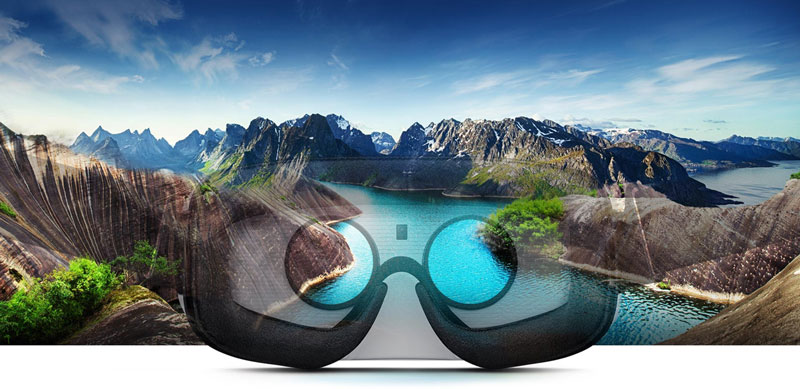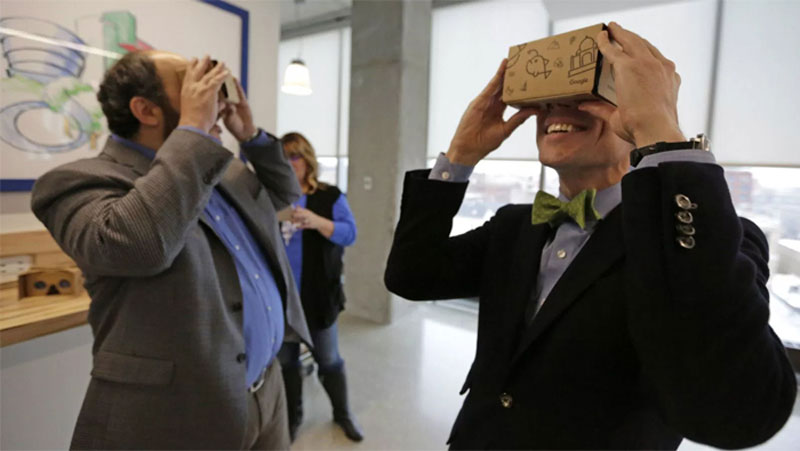Virtual Reality and Augmented Reality are creating a buzz in the technology world. While it is within the gaming industry that the technology is really progressing in leaps, both technologies are finding their feet within entertainment, business, and retail. Whether you are already a 3D designer or are looking into becoming a developer, there are plenty of resources available, and many of them are free. Becoming a developer also means that you need to be an early adopter of the technology which provides the benefit that you will be in at the ground level.
VR Or AR?
Virtual Reality is a computer generated simulation of real life, while Augmented Reality layers enhancements on top of the real world. While Virtual Reality is often talked about as being the future of gaming, it is becoming increasingly apparent that Augmented Reality is more likely to be the future. For business and development uses, however, both Virtual and Augmented Reality have already proven a popular choice.
Possible Uses And Applications
Gaming is the most obvious use of Virtual Reality, and it is this industry that will push the development of consumer VR headsets forward. There are already a limited number of options available to the consumer, including Valve and HTC’s Vive as well as the announced launch of the Playstation VR set, which was previously called Project Morpheus.
Retail businesses, including those in the fashion, interior and exterior design, and home refurbishment and decoration industries, can also benefit. Manufacturing, design, and development roles may also require or benefit from virtual and augmented reality design skills.

The Different Elements Required For Augmented Reality
There are different elements required in the production of augmented reality, so if your skills do not necessarily lie in the use of the Unity development platform, you could still be involved in augmented reality development:
- Visual – For virtual reality, it is necessary to capture and utilise panoramic 3D footage. Videographers, as well as 3D animators and 3D designers can create image files for use in the creation of augmented reality worlds.
- Audio – Virtual reality is less likely to require audio files, because it will usually rely on genuine and live audio, but the overlaying of enhanced audio will be a major component in augmented reality. Audio producers are required for the development of this type of software and platform, therefore.
- Coding – Once the video, audio, and enhanced layers have been created, coding is required to combine these files and also to determine how users interact with the augmented reality world.
- Hardware – There is an increasing number of VR headsets available, while mobile phones and other mobile devices can be capable of offering Augmented Reality, or combined with mobile units like Google Cardboard, to create mobile VR headsets. Development of these and other items of hardware for use with alternative reality platforms will continue, and it will require developers and engineers to advance these devices.
Unity And Other Software
Whatever element of alternate reality development you want to get into, you will need access to the right tools and the best platforms. Full platforms include the likes of Cryengine and Unity 3D, while specific image creation tools like Gimp and audio tools like Audacity can be used to create the individual elements. You should determine the type of development you intend to get into, buy or download the software, and start getting to grips with it.
Tips
Start Small But Think Big
All developers have to start somewhere, so rather than throwing yourself into trying to develop the next Pokemon Go or building the next Oculus Rift, start with something smaller. Try to ensure that you have the basic skills necessary for whichever element you intend to first tackle, and then expand from there so that you can incorporate more elements as you learn.
Don’t be afraid to think big in the long term, but know that you are unlikely to be able to fully develop a working reality entirely on your own so start small.
Take Advantage Of Existing Tools And Technologies
There really is no need to reinvent the wheel, especially thanks to the range of free 3D development tools and applications that are available. What’s more, sites like Best3DModel.com enable you to download existing 3D image files and use these for the development of your VR worlds and platforms.
Using existing assets means that you can reduce the skills that you need to master and can cut down development time considerably, too.
Get Google Cardboard
The best developers are those that have a genuine interest in what they are developing, and that actually use the end products that they design. At the very least, you will need to test your development, and while some VR headsets can cost upward of $500, the Google Cardboard costs less than $20 and works with a wide range of Android handsets. Buy a Cardboard headset, download some of the VR apps that are available, and see what others are up to and how you can improve them.

Google Cardboard certainly has its limits, but it also has its benefits and you should take advantage of these when possible.
Test
Once you have started to learn how to develop alternate realities, and you have at least bought a Google Cardboard headset, you should start testing your developments. No app or software application should be launched without first benefiting from extensive testing. Testing is the only way to properly debug, and until you have the kind of budget that will allow for open Beta testing, you will need to start conducting the tests yourself.
Don’t assume that what is being emulated on your screen is what end users will actually experience.
Develop A Broad Understanding
Even if you only intend to create high quality 3D designs for characters and for other alternate reality platforms, you should have a rounded understanding of how the other elements work and how they all fit together.
You don’t necessarily need to master every nuance of the Unreal Engine, but you should understand what it is, what it does, and how it fits into the development cycle.
Learn, Learn, Learn
Even before you begin learning how to develop, you should start to learn as much as possible about the technology. Determine how VR and AR are used, the type of application or game you wish to develop, and your role in the development cycle. Keep up to date with alternate reality news, some of the latest products to enter the marketplace, and advances in the technology.
By keeping on top of these advances and improvements, you could identify new possibilities and discover new software and hardware that benefits you.
Your Future In VR/AR Development
Alternate realities are being adopted in the gaming and entertainment industries, and they are becoming increasingly popular in healthcare, manufacturing, and retail. Alternate Reality development remains a relatively new area of development, and by getting in now, you could be more than just an early adopter – you could become an early developer.
George Egbuonu – Best3DModel.com is a marketplace for 3D models, bringing 3D designers and developers together. Publish and sell your models or buy existing models to cut production time and to enjoy access to high quality work.

